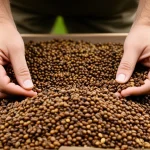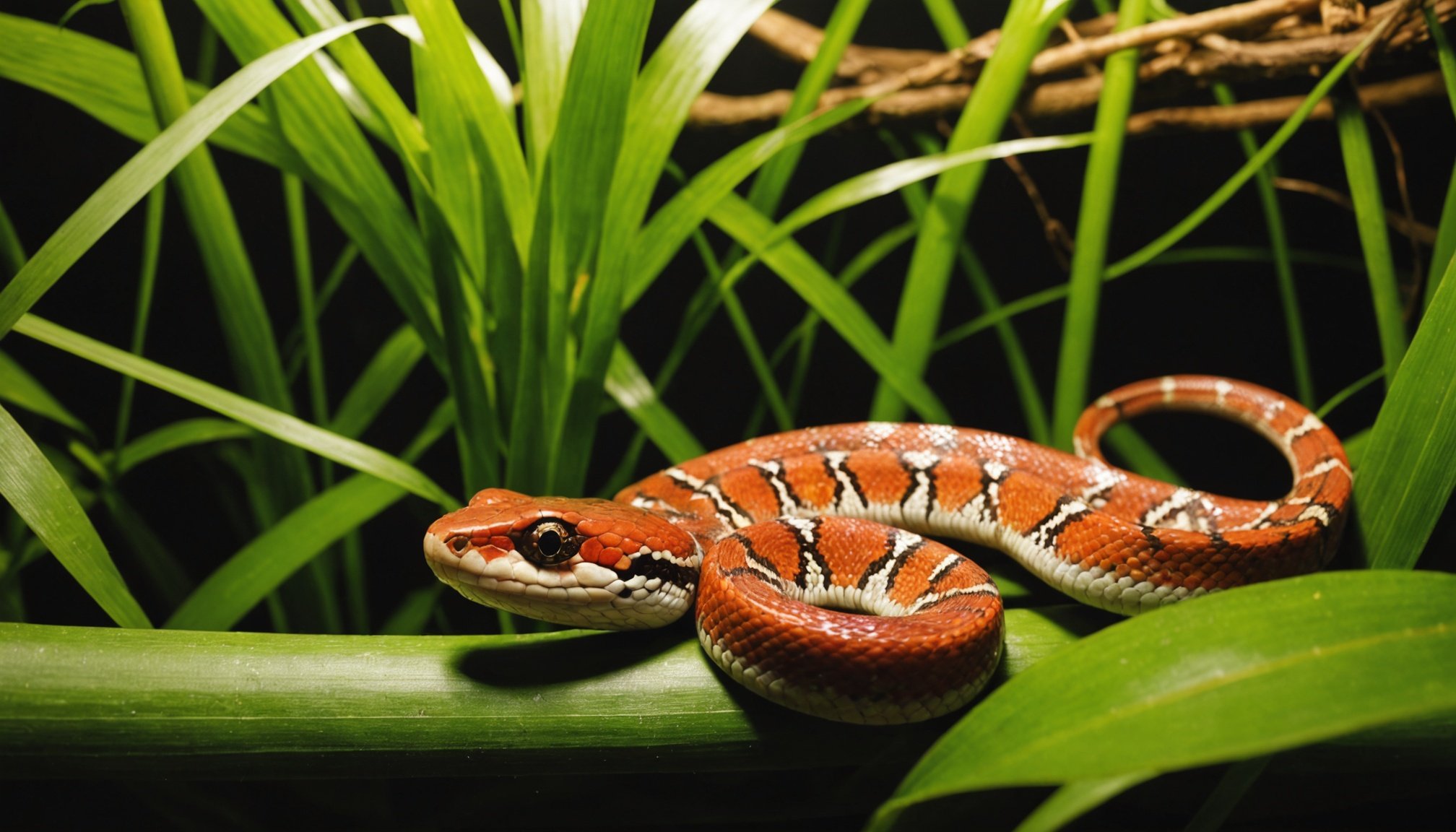Illuminating Your Corn Snake Habitat: The Definitive Guide to Essential Lighting Techniques
When it comes to creating the perfect environment for your corn snake, lighting is a crucial aspect that often gets overlooked but is vital for the health and well-being of your pet. In this comprehensive guide, we will delve into the world of snake lighting, exploring what your corn snake needs, how to set up the ideal lighting, and some recommended products to make your job easier.
Understanding Your Corn Snake’s Lighting Needs
Corn snakes, like many other reptiles, have specific lighting requirements that mimic their natural habitat. Here are some key points to consider:
Also read : Mastering Canine Joy: The Ultimate Guide to Using Positive Reinforcement for Teaching Your Dog to Roll Over
Natural Light and Circadian Rhythms
Corn snakes benefit greatly from natural light, which helps them adjust to day and night cycles and seasonal changes. However, direct sunlight should be avoided as it can quickly become lethal due to the high temperatures it can generate[1][2].
No Special Lighting Requirements
Unlike some other reptiles, corn snakes do not require UVB lighting to survive. They can thrive in environments with ambient light, which can be provided by fluorescent light bulbs or desk lamps. This makes their care relatively straightforward compared to other reptiles like bearded dragons or iguanas[2].
Additional reading : Effective Strategies to Alleviate Separation Anxiety in Newly Adopted Pets
Setting Up the Ideal Lighting for Your Corn Snake
Creating the right lighting setup for your corn snake involves several components, including heating, ambient light, and ensuring the right temperature gradient.
Heating and Temperature Gradient
Corn snakes need a temperature gradient to regulate their body temperature. Here’s how you can achieve this:
- Heat Source: Use a heat lamp, undertank heat pad, or heat cable to provide a warm end in the enclosure. The ideal temperature for the warm end is around 85°F (29°C), while the cool end should be at room temperature, typically in the low 70s (around 21°C)[1][2].
- Thermometer Placement: Ensure thermometers are placed inside the enclosure, particularly inside the warm end of the hide, to get accurate temperature readings. This is crucial because temperatures can vary significantly within a few inches[1].
Ambient Lighting
For ambient lighting, you can use:
- Fluorescent Light Bulbs: These provide a gentle, non-invasive light that is perfect for observing your snake without causing stress.
- Desk Lamps: These can also be used to create a comfortable and well-lit environment for your pet[2].
Recommended Products for Snake Lighting
Here are some recommended products to help you set up the perfect lighting for your corn snake:
Heating Products
- Zoo Med Heat Mat: A reliable and safe heat source that can be placed under the tank to provide a consistent temperature.
- Exo Terra Heat Lamp: A high-quality heat lamp that can be controlled with a thermostat to maintain the desired temperature.
Lighting Products
- Fluorescent Light Bulbs: Brands like Zoo Med or Exo Terra offer fluorescent bulbs that are specifically designed for reptile enclosures.
- Desk Lamps: A simple desk lamp can provide the ambient light needed without breaking the bank.
Table: Comparing Lighting and Heating Options
| Product | Type | Use | Benefits |
|---|---|---|---|
| Zoo Med Heat Mat | Heat Mat | Under-tank heating | Safe, consistent heat |
| Exo Terra Heat Lamp | Heat Lamp | Basking spot heating | Adjustable with thermostat |
| Fluorescent Light Bulbs | Ambient Lighting | General illumination | Gentle, non-invasive |
| Desk Lamp | Ambient Lighting | General illumination | Affordable, easy to set up |
Practical Tips for Setting Up Your Snake Enclosure
Here are some practical tips to ensure your corn snake’s enclosure is well-lit and comfortable:
Avoid Direct Sunlight
Direct sunlight can cause the enclosure to overheat quickly. If you place the enclosure near a window, ensure it is shaded to prevent direct sunlight from entering[1].
Use Hides and Substrate Wisely
- Hides: Provide dark, tight hides to help your snake feel secure. These can be hollow logs or PVC pipes.
- Substrate: Use absorbent substrates like aspen shavings or cypress mulch. Avoid aromatic woods like pine or cedar, and never use sand due to the risk of impaction[1][2].
Maintain Proper Humidity
While corn snakes do not require high humidity levels, ensuring fresh water is available and maintaining a humid hide box during shedding can be beneficial. Add a clump of damp moss or paper towel to the hide box when your snake is preparing to shed, and remove it after shedding to prevent bacterial and mold buildup[1].
Common Mistakes to Avoid in Snake Lighting
When setting up the lighting for your corn snake, here are some common mistakes to avoid:
- Overheating: Avoid placing the heat source too close to the snake or using it without proper ventilation, as this can lead to overheating.
- Insufficient Temperature Gradient: Ensure there is a clear temperature gradient in the enclosure to allow your snake to regulate its body temperature effectively.
- Inadequate Lighting: While UVB lighting is not necessary, ensuring there is enough ambient light for your snake to see and navigate its environment is crucial.
Quotes and Insights from Experienced Snake Keepers
- “Natural light from nearby windows will help your corn snake adjust its day and night cycles, and its seasonal cycles. Be careful to avoid direct sunlight shining into the cage, or the temperatures could quickly become lethal.” – Reptiles Magazine[1].
- “Corn snakes do not need any specific lighting requirements to survive. We recommend using a fluorescent light bulb or a desk lamp to provide ambient light for the tank.” – PangoVet[2].
Creating the right lighting setup for your corn snake is not just about providing light; it’s about replicating their natural environment to ensure their health and happiness. By understanding your snake’s specific needs, using the right products, and avoiding common mistakes, you can create a thriving habitat for your pet.
Remember, the key to successful snake care is attention to detail and a commitment to providing the best possible environment. With the right lighting, temperature gradient, and care, your corn snake can live a long and healthy life, bringing joy and fascination to your home.
Final Thoughts and Recommendations
If you’re new to keeping corn snakes, here are some final thoughts and recommendations:
- Start Simple: Begin with a basic setup and adjust as needed based on your snake’s behavior and health.
- Monitor Temperatures: Always check the temperatures inside the enclosure, especially within the hides, to ensure they are within the safe range.
- Observe Your Snake: Pay attention to your snake’s behavior and adjust the lighting and temperature accordingly. If your snake seems stressed or avoids certain areas, it may indicate a problem with the setup.
By following these guidelines and tips, you’ll be well on your way to creating a perfect and illuminating habitat for your corn snake. Happy snake keeping











